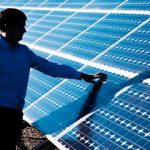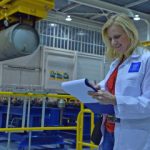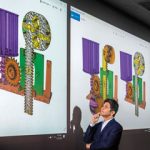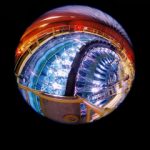PNM, Sandia partner on energy tech development
Sandia and New Mexico’s largest electricity provider, PNM, have teamed up to bring energy resilience, security and stability to the state and country. They have signed a Cooperative Research and Development Agreement to collaborate in numerous fields, with Sandia's work funded by the DOE Office of Electricity's Energy Storage Program.
How to multitask when nuclear nonproliferation is on the line
New cognitive science research from Sandia shows that while maps can help you identify landmarks while being escorted, using one also limits situational awareness and knowledge of surroundings not on the map. This finding is one of several coming from a three-year project that paired cognitive scientists and nuclear safeguards experts to conduct human performance tests and develop recommendations for inspectors.
Finding COVID-19 needles in a coronavirus haystack
To accelerate the filtering of coronavirus studies in the search for information relevant to COVID-19, Sandia has assembled a combination of data mining, machine-learning algorithms and compression-based analytics to bring the most useful data to the fore on an office computer.
Automating complex 3D modeling
A team of researchers led by Sandia has invented a first-of-its-kind software for scientists to create accurate digital representations, or meshes, of complex objects. The new software, VoroCrust, offers a novel way to meshes used by scientists in many disciplines to create geometric models of all kinds of parts, from rotors to wheels to protective equipment.
Innovate New Mexico features two Sandia inventors
The seventh annual Innovate New Mexico Technology Showcase gave researchers from institutions across the state the opportunity to pitch technologies to industry representatives and investors. Sandia sponsored the event this year, and two Labs researchers presented along with 10 scientists from six additional organizations.
Two campaigns expand Labs’ research portfolios
To deter attempts to disable U.S. electrical utilities and to defend U.S. nuclear weapon systems from evolving technological threats, Sandia has begun two multiyear initiatives to strengthen U.S. responses.
Identify, track, capture
Sandia robotics experts are working on a way to intercept enemy unmanned aircraft systems midflight. They recently completed a successful test using a swarm of four unmanned aircraft systems to intercept a flying target, using a net to trap it in air like an insect caught in a web and safely lower it to the ground.
Does strategy matter?
Over the past three years, Sandia developed a strategic direction made up of seven priorities to guide the Labs for the next 20 years. Each priority has a team behind it, working to implement the strategy. The teams have brought these priorities to life and achieved significant accomplishments in each of the seven areas.
Engineering success through predicting failure
Around the world, materials scientists and engineers are trying different ways to predict fractures in ductile metals, but it’s not clear which approach is most accurate. To compare the different methods, Sandia researchers have presented three voluntary challenges to their colleagues: Given the same basic information about the shape, composition and loading of a metal part, could they predict how it would eventually fracture?
Armoring satellites to survive, operate through attacks
Researchers at Sandia launched a seven-year mission campaign this month to develop the science, technology and architecture needed for autonomous satellite protection systems. The campaign, called STARCS, will fund dozens of Laboratory Directed Research and Development projects.









